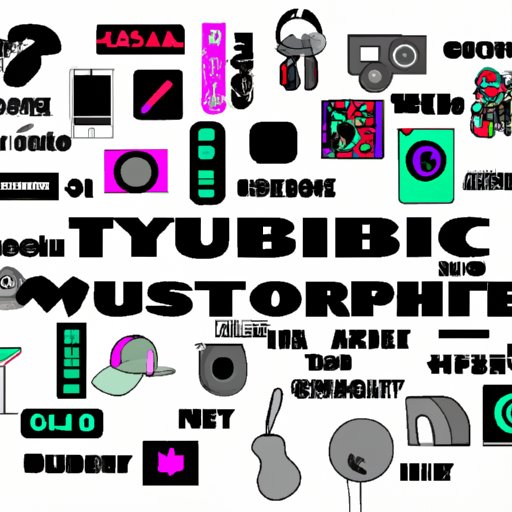Introduction
Subcultures are groups of people who share a common identity and set of beliefs that are distinct from the larger society. They often develop in opposition to the accepted norm or mainstream values, and they can be found in virtually any society. In this article, we will explore the history and development of subcultures, examine different types of subcultures around the world, investigate the impact of social media and popular culture on subcultures, analyze how subcultures have evolved over time, and look at the role of music and technology in shaping subcultures.
Exploring the History and Development of Subcultures
The concept of subcultures has been around for centuries, with early examples dating back to the 1700s. However, it wasn’t until the 1950s that the term “subculture” was first coined. During this time, sociologists began to study the idea of subcultures and their role in society. Since then, the concept of subcultures has been widely studied and discussed in academic circles.
Subcultures typically arise out of shared experiences and beliefs, such as race, religion, occupation, or lifestyle. Over time, these shared experiences and beliefs can lead to the formation of a distinct group identity, which can manifest itself in various ways, such as unique styles of dress, language, music, art, and more. As these groups become more established, they can even gain recognition and acceptance within the larger society.

Examining Different Types of Subcultures Around the World
There are countless types of subcultures around the world, each with its own unique characteristics. Some of the most common types include punk, goth, hip hop, skater, raver, gamer, and metalhead. While these are by no means the only types of subcultures, they are some of the most recognizable and influential.
Common characteristics across many subcultures include a strong sense of community and identity, an interest in alternative lifestyles or activities, and an inclination to challenge or reject mainstream values. Additionally, subcultures often involve elements of creativity and self-expression, with members expressing themselves through clothing, music, art, and other forms of artistic expression.

Investigating the Impact of Social Media on Subcultures
In recent years, social media has had a major impact on the spread of subcultures. Platforms like Instagram, YouTube, and Tumblr have made it easier than ever for members of subcultures to connect with each other and promote their interests. This has allowed subcultures to reach wider audiences, which has in turn led to increased visibility and acceptance in mainstream society.
However, there are also drawbacks to the rise of social media in relation to subcultures. For example, it can be difficult to differentiate between genuine members of a subculture and those who are simply trying to capitalize on its popularity. Additionally, the oversaturation of certain subcultures on social media can lead to their commodification, which can dilute their original meaning and purpose.

Examining the Relationship Between Subcultures and Popular Culture
Subcultures and popular culture are closely intertwined. Pop culture often borrows heavily from subcultures, taking ideas and trends from them and repackaging them for a mass audience. This can lead to the commodification of subcultures, as well as their eventual absorption into the mainstream. On the other hand, subcultures can also have an impact on popular culture, influencing the way in which certain topics are portrayed and discussed.
Analyzing How Subcultures Have Evolved Over Time
Subcultures have gone through various changes over the years, both in terms of their composition and the ways in which they are expressed. These changes can be attributed to a variety of factors, including generational shifts, technological advances, and the influence of popular culture. As a result, subcultures today often look very different from their predecessors.
Investigating the Influence of Music on Subcultures
Music is an integral part of many subcultures, and it can have a powerful influence on their development and evolution. Music genres like punk, hip hop, and metal have all had a significant impact on subcultures, and their sounds and themes have been embraced and adapted by members of these subcultures. Additionally, many subcultures have developed their own unique musical styles and genres, which further sets them apart from the mainstream.

Examining the Role of Technology in Shaping Subcultures
Technology has also played a major role in the development of subcultures. The internet, in particular, has enabled members of subcultures to easily connect with each other and share their interests and ideas. Additionally, technology has allowed subcultures to spread more quickly, reaching new audiences and gaining greater visibility in mainstream society.
Conclusion
Subcultures are an important part of our society, and they have had a lasting impact on our culture and our understanding of the world. In this article, we explored the history and development of subcultures, examined different types of subcultures around the world, investigated the impact of social media and popular culture on subcultures, analyzed how subcultures have evolved over time, and looked at the role of music and technology in shaping subcultures. By understanding the complexities of subcultures, we can gain a better appreciation for the diversity of our society.
(Note: Is this article not meeting your expectations? Do you have knowledge or insights to share? Unlock new opportunities and expand your reach by joining our authors team. Click Registration to join us and share your expertise with our readers.)
